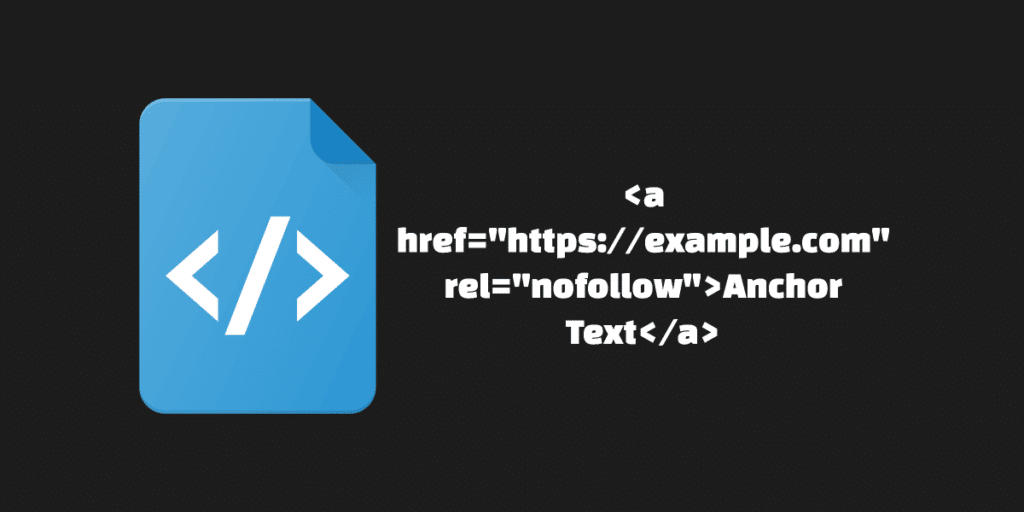These links on your website are known as sponsored links. Google requests that you use this tag to mark any links you have received payment to promote. A sponsored link tag should resemble the following:
Table of Contents
<a href="https://example.com” rel="sponsored">Click here</a>Any paid links on your site must utilize the standard nofollow or Sponsored attribute. If you purchase links that are labeled as UGC or dofollow, Google will punish you.
How Google knows whether or not I was compensated for a link on my website is something you may be wondering. Here is where things start to become a little hazy. Google has developed techniques for identifying sponsored posts that haven’t been modified to be dofollow.
How their algorithm can find these linkages is a mystery. But they have devised mechanisms to identify those who purchase links or get payment for connections.
Sponsored links and payments, however, fall into a murky area. Google is aware of the fact that payment may take many different forms. Free goods or covert deals behind closed doors are two ways you can be compensated. Google’s algorithm cannot detect many paid posts and links.
What does that look like?
Let’s examine a link in more detail. A standard HTML link appears as follows:
<a href="https://www.example.com">A good example link.
These kinds of links are undoubtedly prevalent throughout your material. They direct users to engaging, pertinent material on your own or another website. Include the nofollow attribute in your link so that it appears as follows:
<a href="https://www.example.com" rel="nofollow">example link/a>This will show that you don’t trust the website you’re linking to or that it’s a paid placement.
Can you use multiple link attributes?
You can utilize these various link properties separately or in combination. You might, for instance, have both paid and user-generated links. An example of this link attribution might be:
| Code Examples | |
| Regular or Dofollow | <a href=”https://example.com”>text here</a> |
| Paid or Sponsored | <a href=”https://example.com” rel=” sponsored”>text here</a> |
| User-Generated Content | <a href=”https://example.com” rel=”ugc”>text here</a> |
| Nofollow | <a href=”https://example.com”rel=”nofollow”‘>text here</a> |
| Multiple Attributes | <a href=”https://example.com” rel=”ugc sponsored” >text here</a> |
Nofollow vs. Dofollow – What’s the difference?
A dofollow link, technically speaking, transfers authority from the host site to the linked page. It is an endorsement from the related website and shows that the webmaster is confident in the linked material.
As a result, Google considers do follow links to be a powerful ranking indication and favors pages with more unique links. The syntax for a specific dofollow link is as follows.
<a href="https://example.com">text here</a>On the other hand, nofollow links have the rel=”nofollow” tag.
<a href="http://www.example.com/" rel="nofollow">text here</a> The nofollow tag was created by Google to allow web admins to flag any links in their content that they don’t trust. From the standpoint of the user experience, there is no difference. Nofollow links still send referral traffic.
Google, however, does not count it as part of a site’s backlink profile. In essence, dofollow links that point to a website typically raise that site’s search engine ranking. Usually, nofollow links don’t.
The rel link family
rel=”nofollow”
For any links they didn’t want search engines to take into account, web admins utilized the nofollow tag. The webmaster didn’t trust any links, including links in comments and other user-generated material, affiliate links, sponsored brand mentions, and any links.
To assist web admins in adding additional context to their connections, Google added two new link kinds in 2019.
rel=”sponsored”
As its name implies, the rel=”sponsored” tag is used for sponsored links, such as adverts, affiliate links, and paid brand references.
Here’s an illustration of how to apply it.
<a rel="sponsored" href="https://example.com">Example</a>rel=”UGC”
User-generated content is referred to as UGC. This tag is frequently used in social media for blog comment links, forum postings, and any other site that permits users to add links.
Use it as follows:
<a rel="ugc" href="https://example.com">Example</a>Both sponsored and UGC links do not convey page authority to the corresponding page and do not directly affect search rankings, similar to the nofollow tag. Should you be concerned about using these tags too much? Actually, no.
These tags are not very valuable in terms of SEO. However, Google advises web admins to make use of them so that its algorithms can better grasp the purpose of a link.
Reasons why nofollow links still matter to your SEO strategy
Nofollow connections from reputable websites can nevertheless significantly improve your search rankings for many good reasons.
Nofollow links still generate traffic.
Nofollow links don’t directly help your SEO. They continue to send you referral traffic, nevertheless. Therefore, even a backlink with nofollow on a popular website is priceless.
For instance, a nofollow link on BuzzFeed or another popular news website can drive thousands of people to your website.
High-authority nofollow links > low-authority dofollow links
In terms of SEO, dofollow links are typically preferable to nofollow links. A dofollow link from a low-authority site is far less helpful to your SEO strategy than a nofollow link from a high-authority website in your niche.
Why? Because the authority of the connecting website is the main aspect that Google takes into account when determining the worth of a backlink. Furthermore, there are solid signs that Google tolerates nofollow connections from reputable websites.
This is why a Forbes, New York Times nofollow link that the editorial staff has approved is still priceless. It improves your backlink profile and generates referral traffic to your website.
Nofollow links drive dofollow links.
Dofollow links from other websites frequently follow nofollow links on high-authority websites. Your nofollow link will receive greater attention because millions of people follow high-authority websites, read its material, and share it with their social media connections.
As a result, the resources, links, and examples from the top websites are frequently used in the content of lesser websites.
Nofollow links diversify your link profile.
A Google penalty is always possible for an artificial link profile that exclusively contains dofollow links and raises red flags.
Why? Because a link profile cannot naturally expand and obtain dofollow links. A natural profile, however, always contains a high proportion of nofollow links.
Nofollow links power your digital PR strategy.
Many of the most well-known websites for business and marketing do nofollow all external connections. Dofollow or nofollow links don’t matter, though, if you’re thinking long-term about brand development and online PR.
What matters is that your brand is promoted on the most reliable and popular websites that help you gain authority and refer customers.
Google’s new link attribution rules
Google has never revealed the exact workings of its algorithm. There has been much discussion on how it handles nofollow links for crawling, indexing, and ranking. Google has now provided us with more specific guidance outlining how it will handle nofollow links in the present and the future.
| Before | Since March 1, 2020 | |
| Link Types | Nofollow Sponsored User-generated | Nofollow Sponsored User-generated |
| Google’s New Rules | It is NOT used for crawling or indexing It MAY be used as a “hint” for ranking | It now MAY be used as a “hint” for crawling or indexing It now MAY be used as a “hint” for ranking |
How Google looks at links
Nofollow links will now be considered “hints” by Google, and it may opt to use them as a ranking factor. In other words, Google has the option of using a nofollow link for ranking purposes or not.
If it finds a link to be reliable and credible, it might disregard your link schema and use the link to boost its ranking and page authority. At least until March 1, 2020, Google will continue to disregard nofollow links while crawling and indexing web pages.
Effective March 1, 2020
In the same way, they already use nofollow links as “hints” for ranking. Google will start treating them as “hints” and may choose to crawl and index them. The decision to use your nofollow link tags for PageRank and authority will be made by Google using them as suggestions at this stage.
Conclusion
Therefore, as long as you’ve been appropriately marking your links, you shouldn’t have anything to worry about. Just be sure to take the aforementioned new regulation modifications into account.
You will eventually be rewarded if you follow Google’s policies. As you establish and develop your online presence, use these new link qualities.





